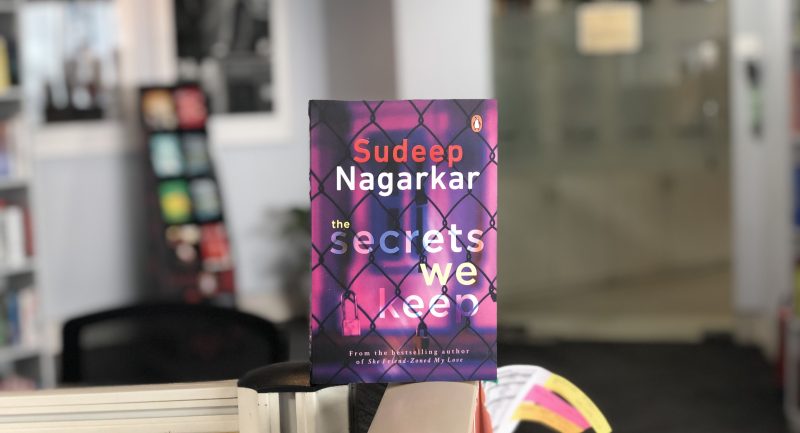
The Minority Conundrum, the second volume in the Rethinking India series explicates what it means to be a minority in majoritarian times. The contributors identify vulnerabilities that encumber the quest for the realization of substantive citizenship by minority groups. The essays deal with educational attainments, employment prospects in a liberalized economy, possibilities of equal opportunity, violence of the state and vigilante groups, emerging questions of citizenship and employment, linking language with the material life of its speakers, and the receding political voice of minorities amidst a majoritarian upswing.
Here’s an excerpt from the book:
In a country marked by multiplicity of faiths, speeches, castes, ethnicities and geographies, the question ‘who is a minority?’ is riddled with complexities. What adds to the intricacy is that each of these collectivities is segmented into status groups, sects, forms of worship, and regional variations to the extent that the difference offsets the commonality. Identities are multiple, and each of these intersects with the other to complicate the situation further. A Santhal convert to Christianity bears no resemblance to the Syrian Christians in Kerala, be it in language, custom or the status that she enjoys in the wider society. A Tamil Muslim has far more points of interaction with a Tamil Hindu than with his co-religionists in Kashmir and in Urdu-speaking areas. This is a complexity that afflicts the formation of majority identity as much. Minorities are contextually produced, and violence is key to it: Biharis in Maharashtra, Tamil speakers in Karnataka during the language riots, Bengalis in Assam at the peak of the Assam movement, Sikhs in 1984. On similar grounds, the rise of Hindutva nationalism in India corresponds with the exclusion and demonization of and the use of targeted violence against the Muslims, and occasionally the Christians.
India represents one of the most complex multinational and polyethnic societies to be governed by modern democratic structures. The presence of at least 1600 speech communities has been recorded by the Indian census, of which at least thirty-three are more than one million strong. More than 3000 castes and nearly 350 tribal groupings form the Indian cultural mosaic. Further, the adherents of almost all the world’s major religions—Judaism, Christianity, Islam, Hinduism, Jainism, Buddhism, Sikhism, Zoroastrianism and various forms of animism—are to be found here. About 80 per cent of the population practises Hinduism, which in itself is a highly plural system of beliefs and practices. The disaggregation of the population along regions and religions provides an intriguing scenario. There are merely 2.3 per cent Christians in the country, but they form the majority in three states, namely Meghalaya, Mizoram and Nagaland, and are a significant proportion of the population in Kerala, Arunachal Pradesh and Manipur. One of the most prosperous states of India, Punjab, has a Sikh majority. The Indian Muslim population, though only 14.1 per cent according to the latest census, constitutes the third highest in the world in its sheer magnitude. Given the situation, quite often, the neat compartmentalization of majority and minority appears mythical. Stretching the argument to an absurd extent, a single- judge bench of an Indian court declared in 2007 that Hindus were a true minority if caste and sectarian divisions were to be taken into account. The judge’s order read that Muslims were in fact the ‘only majority religious community in comparison with other religious communities’, and all others were ‘in minority comparison to the Muslims of India’. Mercifully, realizing the preposterousness of the order, and its far-reaching consequences, a division bench of the high court swiftly overturned it.
India represents one of the most complex multinational and polyethnic societies to be governed by modern democratic structures. The presence of at least 1600 speech communities has been recorded by the Indian census, of which at least thirty-three are more than one million strong. More than 3000 castes and nearly 350 tribal groupings form the Indian cultural mosaic. Further, the adherents of almost all the world’s major religions—Judaism, Christianity, Islam, Hinduism, Jainism, Buddhism, Sikhism, Zoroastrianism and various forms of animism—are to be found here. About 80 per cent of the population practises Hinduism, which in itself is a highly plural system of beliefs and practices. The disaggregation of the population along regions and religions provides an intriguing scenario. There are merely 2.3 per cent Christians in the country, but they form the majority in three states, namely Meghalaya, Mizoram and Nagaland, and are a significant proportion of the population in Kerala, Arunachal Pradesh and Manipur. One of the most prosperous states of India, Punjab, has a Sikh majority. The Indian Muslim population, though only 14.1 per cent according to the latest census, constitutes the third highest in the world in its sheer magnitude. Given the situation, quite often, the neat compartmentalization of majority and minority appears mythical.
From a strictly juristic reading, the Constitution of India recognizes religious and linguistic minorities for the purpose of conferring special rights to establish educational institutions of their choice. Articles 29 and 30 carry the empowering provisions in this regard. The reticence of the Constitution-makers in defining who constitutes a minority has led to endless litigation. Were they to be decided numerically? Given India’s federalism, were the minorities to be determined at the level of the state or at the national plane?
In its cognitive framework, the volume The Minority Conundrum privileges the material lives of the minority groups over the spiritual or the cultural. In the real world, the two spheres rarely exist in compartments. Nonetheless, the task is to identify vulnerabilities that encumber the quest for the realization of substantive citizenship by minority groups. The essays therefore singularly emphasize educational attainment, employment prospects in a liberalized economy, possibilities of equal opportunity, violence of the state and vigilante groups, emerging questions of citizenship and employment, linking language with the material lives of its speakers, and document the receding political voice of minorities in times of a majoritarian upswing.
The Minority Conundrum is available now.









